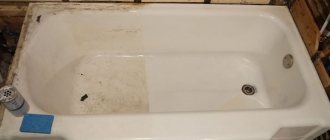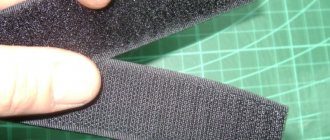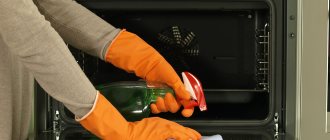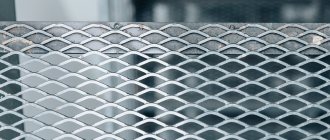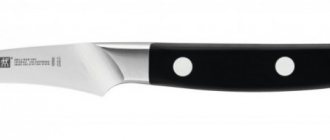Velcro can come off due to the fact that the adjustment is not correct and the planes of the Velcro do not completely adjoin each other - you need to adjust (if possible) so that the Velcro adheres as much as possible to each other, or you will have to re-stitch it!
The second reason could be that the microhooks (the plastic hedgehog square) are clogged; it gets filled with lint and debris and it cannot catch well enough on the square with lint (the second part of the Velcro), you need to clean it, thoroughly and completely remove everything foreign from the microhooks.
The third reason is failure, possibly tearing out the pile or sagging, straightening of the microhooks - in this case, only replacement, repair and cleaning will not help.
Velcro on shoes can stop sticking for several reasons.
Firstly, they can become clogged with various debris and this will stop sticking. Then they just need to be cleaned. You may have to use foreign objects for this, for example, a gypsy needle or a metal crochet hook (thin).
If the problem is not contamination and the Velcro has simply become unusable, then you need to replace them either yourself or use the services of a repair shop. In this case, you will need to tear off the old Velcro from the shoes, replace them with new ones of the same size and sew them in place of the old Velcro.
The most incredible way to get my hair back!
This is just a DISASTER ! And after all, my hair did not start falling out in one day, but systematically - day after day I watched how the hair left my head: while combing, washing, even while sleeping. (read more…)
Unfortunately, Velcro is a sore spot not only in shoes, but also in clothing. Velcro on shoes often doesn't last very long. I found a solution. I bought Velcro once, it was sold by the meter. It costs 50 rubles per meter. So, when the Velcro on shoes fails, I calmly glue new ones, and before that, of course, I remove the old ones. The most interesting thing is that such Velcro lasts much longer than original ones, so the shoes can easily live out their life.
It’s unlikely, of course, that you haven’t checked the Velcro (the correct name is contact tape) for contamination (you need to clean the half of the Velcro that has hooks, the part with lint could also have become unusable, threads are sticking out, and so on, you can carefully trim ).
If it is not possible to revive the old Velcro, then only replacing it with new ones will help.
Glued Velcro and dismantling and gluing new ones is much easier, but sewn ones are not much more complicated.
We removed the old ones, then we work with an awl + a needle, sew on new ones, everything is simple and clear.
You can take it to a workshop, but in 99% of cases they will not restore the old ones, they will simply replace them with new ones, or offer a different fastener option.
Do you like guys with long hair?
Not really
If the hooks themselves do not hold, then look carefully, either they are clogged with dirt from the pile and just need to be cleaned, or the hooks themselves are out of order, then only replacement will help.
You can clean the Velcro either mechanically using your fingers and some sharp objects, as well as tweezers or tweezers, or using tape.
If there are no problems on the hook side, then look at the pile, where the loops are, perhaps there is simply none left, or it is too tangled and needs to be fluffed up.
How to clean Velcro on shoes and clothes
- Sharp instruments. Using a knife, a needle, or nail scissors, they pick up the debris and remove it from the bristles with their fingers. Before this, large threads that appear on the surface are manually collected.
- Toothbrush. For this method you will need an old brush and soap solution. Use a brush to comb the hard bristles of the fastener, periodically wetting it and washing it in a soap solution. The soft half cannot be cleaned with a brush. If it is dirty, remove debris from it with your fingers or clean it with a hand dipped in a solution.
- Wash. Sometimes regular washing helps to clean the Velcro on your shoes. The fittings are fastened before washing. If the garbage has not been washed, but has risen to the surface, it is collected with tape.
- Adhesive tape. First, the contaminants are lifted to the surface manually or with any sharp object. Adhesive tape (duct tape, scotch tape) is glued to the bristles and sharply torn off. This is done until the Velcro is clean. The soft side cannot be cleaned this way.
- Comb. Use a fine-toothed comb or pet brush to comb through the bristles of the fittings. The collected fluff, the hairs are removed, and the procedure is repeated again.
- Tweezers. Any debris can be easily removed with eyebrow tweezers. They pick up threads and fluff and pull them out. This tool is convenient to combine with sharp devices.
To ensure that the Velcro fastener lasts as long as possible, you should always fasten it after removing your shoes. This will significantly reduce the amount of dust settling on it, and will also prevent particles of dirt and grease from getting into the space between the hooks.
Cleaning the turbo brush
The brush serves to move debris towards suction. Due to direct contact with surrounding debris and dust, brushes require constant cleaning. During the cleaning process, they can wrap around a large amount of hair, which leads to excessive effort when rotating the brush, resulting in a reduction in the service life of the vacuum cleaner.
- Before cleaning, you must remove it from the robot vacuum cleaner. If you try to clean it inside the device, you can easily throw off the balancing of the turbo brush and lead to a displacement of the axis of rotation of the part and disruption of its functions.
- To remove it, you need to carefully remove the latches holding the turbo brush and pull the part towards you.
- Gently clean the brush with the special hard attachment that comes with the vacuum cleaner.
- Wipe the mounting axes and return the brush to its place.
And this device needs replacement. With daily use, you should change the turbo brush every 1.5-2 months, with less frequent use - once every 3-4 months.
Removing a fresh stain
If contamination is found at home, you can first use universal cleaners from the kitchen cabinet, first aid kit or cosmetic bag. The effect of the chosen product must first be tested on an inconspicuous area of the fabric . The most gentle of them:
- Warmed lemon juice. It is poured onto a cloth that has been cleared of any remaining flakes and resin and left for a quarter of an hour. Then the contaminated area is washed with soap.
- Lemon juice with table salt. Salt moistened with juice is applied to the damaged area and left for 30 minutes (longer if necessary). In the morning, the pulp is removed, and the treated fabric is washed in the usual way.
- Dishwashing gel. First, the item is washed to remove any remaining resin. Then the contaminated area is dipped into a small container with a cleaner and left for 6-8 hours. The remaining gel is washed off with warm water.
- Ethanol. Place a cotton pad soaked in alcohol on the yellowed area. After half an hour, rub off the resin and wash the treated area in warm water and laundry soap.
- Nail polish remover. The damaged fabric is washed in a soapy solution. When all the resin has been removed, the remaining stain is wiped off with liquid and washed again with laundry soap.
Nail polish remover should not contain oil additives. If stains remain after using it, treat the fabric with table vinegar.
How to clean Velcro on shoes?
- Hydrobromic acid is an effective but extremely toxic agent that can be harmful to health. It is not used for household needs, even if there is a need to wash the linden;
- Nitric acid concentrate is an equally hazardous substance that is not suitable for cleaning clothes at home;
- Acetone is a solvent that can be used to remove linden or poplar buds from clothes, but you must follow the rules of use;
- Sodium hypochlorite is a chlorine bleach that is often used to remove a variety of stains on white fabrics, including linden and poplar buds.
You can remove fluff by hand. To do this, you need to straighten the Velcro and use your nails to remove debris from its surface.
Cause of problem spots
In the past, many residents planted large numbers of linden and poplar trees in their yards. This was done for the purpose of landscaping the yard, so that in hot summer weather you could enjoy the shade and coolness under a tree in your yard. No one expected that over time these trees would create so much inconvenience. With the arrival of spring, almost all the benches, sidewalks, curbs, windows, and cars acquired strange yellow spots in which the yard children were quickly busy.
Once on the fabric, the juice of linden and poplar buds strongly ate into it due to its sticky structure, which made all attempts to clean the fabric from these stains almost ineffective. For many housewives, this is a serious problem, because not everyone knows how to wash poplar buds from clothes.
Car enthusiasts are luckier, because many car shops, car washes and showrooms sell products that are applied to the body in order to maximally prevent the “sticking” of tree buds; when washing, they are easily removed from the body.
Traces that have become embedded in the fabric or varnish of a car body are very difficult and sometimes almost impossible to remove. Washing and powder soaking the clothes will not help; simply rubbing with a rag will not clean the body.
How to prevent Velcro from getting dirty?
In order not to think about what and how to clean the Velcro, shoes with such a fastener must be stored correctly.
- Do not leave the Velcro unfastened for a long time, as dust and dirt may get into it.
- Before storing seasonal shoes in storage boxes, be sure to seal the two sides of the Velcro together tightly.
- You can purchase special protection for such fasteners, which is sold at a shoe store. This device is an adhesive tape that sticks tightly to the fastener and prevents dust and dirt from getting on it. At the same time, it is very important that this will not make the Velcro fasten worse, even if it is stored in this form for a very long time.
- Clean the clasp regularly: remove any trapped hairs and any other debris.
- When washing, also fasten the Velcro to prevent lint, etc. from getting into it.
It would seem that cleaning the clasp is not such a difficult process, and in fact it is, provided that you do it regularly. After all, if you accumulate garbage on Velcro for several months, then reading it later will take a lot of time, and the hooks may become deformed and the fastener will no longer hold so well.
Even such an insignificant element on shoes as Velcro requires proper care, so take care of your shoes, clean them, take care of them, and then they will last a very long time.
The best folk methods for softening leather on shoes at home
How to properly prepare water-repellent impregnation for shoes at home?
How I found my ideal hair growth product
Hello dear! I want to share with you my solution to the sensitive problem of hair loss . The problems are very serious, at least for me. I would never have thought that this misfortune would touch me, especially at the age of 29 (read more...)
Do-it-yourself folk remedies and methods for cleaning white felt boots
What to do if your shoes smell bad - 8 simple ways to remove the smell?
Caring for things
How can I clean dirt and grease on the handles of a gas stove if they cannot be removed? Cleaning with folk and special detergents...
What can cause discoloration on jewelry and how to eliminate it. Features of cleaning various metals. How to properly store and care...
How to clean Velcro fasteners on clothes and shoes? What items can be used for cleaning? A special device for cleaning...
How to clean shoes made of natural and artificial leather at home? Special and folk remedies. What to do with dirty soles?
How to clean a kitchen sink? Types of sinks and their care. How to get rid of limescale, rust stains, grease, yellowness, darkening...
With which you can clean a chair with soft fabric upholstery. Removing various types of stains. How to clean different chair upholsteries?
How to clean spoons, forks and knives so they shine? General recommendations for cleaning and storing cutlery. The use of special means and...
How to properly clean a felt hat at home? How to update the lining? Ways to clean a felt hat from dirt, dust, stains,…
How to clean a genuine leather wallet from dirt at home? How to remove difficult stains? Features of washing wallets from different types...
How can I remove stains and blackness on an artificial stone sink? The use of household chemicals and folk remedies. What not to use...
Is it possible to remove dried primer from glass on a window? How…
How to clean green residue inside a plastic water canister? Folk...
How to properly wash polished furniture yourself? How to remove traces of hot...
How to clean Velcro on shoes and clothes
- The first thing to do is to loosen up all the stuck debris; for this we use a brush, needle, knitting needle, etc.
- We apply the adhesive side of the tape to the surface of the Velcro and peel it off with a sharp movement. You need to repeat the procedure until there is not a single piece of debris left on the fasteners.
Bleach will help make the condition of the white sole almost perfect. But it is advisable to use oxygen-containing products. They cope with almost all types of stains: grass stains, iodine and brilliant green, blood.
Clean the Velcro with tape
If the Velcro is clogged, but you don’t have the opportunity to wash it in soapy water, then what can you do to repair the Velcro on your shoes? A fairly effective method is tape. Many people have it at home, and if not, it won’t be difficult to purchase it at any office supply store:
- Use sharp objects to stir up any large debris.
- Cut a piece of tape equal in size to the fastener.
- Stick it tightly to the surface of the fastener.
- Tear it off with a sharp movement - all the debris should remain on the tape.
- If necessary, repeat the procedure.
This method is quick and simple; even a child can do it.
What can you do to keep your sander working?
Many people get confused when a problem arises with Velcro. After all, it is a single whole with the disk, which is a structural part of the grinder. Of course, you can buy a new work disk on sale, which will have new Velcro. However, not all manufacturers offer such a service as ordering and delivery of a new orbital circle.
Most leading manufacturers offer customers a replacement wheel. But often, to purchase it, you have to make a pre-order and then wait for some time for the order to be delivered.
What can be done to temporarily restore the operation of the sander? How can you at least temporarily “reanimate” Velcro if a new circle is expected to be delivered?
Using double-sided tape
Adhesive tape that is sticky on both sides can be an excellent “rehabilitation” material! To use it, place a new grinding disc of the selected grit on the wheel using such adhesive tape.
It should be cut into small squares. The adhesive tape is applied in such a way as to firmly attach the grinding disc to the wheel. After the disk has finished working, you can replace the tape with a new one.
Do you believe in the benefits of visiting cosmetologists?
Not really
How to fix Velcro on shoes that don't stick
- Remove stuck scales from clothes or shoes. Then take a damp cloth and try to wet the stain as best as possible. Repeat the procedure 1-2 times with breaks of several minutes.
- Pour or spray cologne, perfume or eau de toilette onto the stain. After a few minutes, rub the stained area with a handkerchief. If necessary, perform these manipulations several times.
This method is the simplest and best, because it does not require any additional means, and besides, you can clean the Velcro with your fingers wherever you are: at home, at work, while walking, etc.
With the help of other small household items
In fact, there are many more options for cleaning a sticky fastener. Here are some of them:
But you can use a very simple option - dry cleaning. Using special tools, specialists will remove any Velcro on your shoes for a nominal fee. Although all of the above methods will help you solve the problem just as well as professionals.
If you want to maintain the quality of Velcro for a long time, then you should keep it fastened as often as possible, including when you wash the item in the washing machine. During washing, threads and spools that come off the items can easily clog the hooks of the fastener and not only fail to clean it, but also ruin it!
With these simple methods you can easily achieve the desired result and quickly bring a dirty fastener into a presentable appearance. The main thing to remember is that if you want to clean it using one of the indicated methods, try to be careful, since a dirty product can be cleaned, but with a broken one, things are more complicated.
Simple measures for mild cases
If the fastener starts to come undone frequently, it means it is clogged and it’s time to clean it. To start, simply pull out anything stuck to it, the same way you clean a comb.
This simple method will prevent severe contamination and help maintain the functionality of your fastener; moreover, it is the least traumatic for the structure.
But if after such cleaning the clasp still does not work well and often comes undone, then you can clean it in other ways.
How to clean Velcro on shoes? Best ways
- Prepare a solution of bleach and water in a 1:2 ratio in a wide basin.
- Place the shoes in the basin so that the solution covers the sole without touching the top.
- Leave the sneakers for an hour and then check to see if the shoes have bleached.
- If the result is achieved, thoroughly rinse the solution from the sole; if not, put the shoes back in the basin for a while.
- Relief depressions, microcracks and curves can be additionally cleaned with a brush, removing remaining stains of dirt and yellowness.
Shoes and fasteners must be cleaned regularly. If you take care of your shoes every day, clean the fasteners, and wash the surface, you will not need painful cleaning.
Why doesn't the clasp work?
Miniature hooks are located on the hard surface of the fastener, which ensure adhesion. The other side of the product is softer and fleecy.
Velcro can stop working for several reasons. Firstly, the space between the hooks sometimes becomes clogged with household waste. This can be hair, threads from various fabrics, dust and sand. In this case, it is enough to remove the dirt from the plastic.
The second reason is more complicated: the clasp wears out from prolonged use, the hooks break off and do not cling to the soft part. All that remains is to replace the device in the workshop.
The third reason: the fleecy side is too fluffy and cannot withstand the load when moving. Then it is necessary to carry out a simple procedure to restore the functioning of the working surface.
What is the best way to clean Velcro on shoes: methods
The most common problem with Velcro is that pieces of thread, fluff, and hair get between the hooks. The largest fragments can be cleaned out by hand. Simply unfasten the Velcro, grab foreign objects with your nails and pull them out. The clasp will regain its previous functionality.
Expert opinion
Ekaterina Korneva, expert in the field of care, cleanliness and beauty
I will help you understand all the intricacies.
That is, it’s an interesting situation: at the fitting in the salesroom, everything is fine, but in the process of wearing it it turns out that you can only look at them. Linden resin is a special chemical compound consisting of polymers that eat into any material. When you need a replacement For any questions, please contact me, I will be happy to answer!
Similar:
Most likely, during washing, the hooks of the fastener became clogged with various threads and spools that form in the washing machine. Therefore, you need to clean the surface of the fasteners. This can be done in various ways: – just try to pull out stuck threads and other debris with your fingers; – use a regular toothbrush or clothes brush for this purpose; – you can try to pick out the debris with a needle or pin; – as an option, apply the sticky side of the tape to the fastener and pull sharply; – run a clothes cleaning roller over the surface of the fastener; – there is also a special plastic Lintscoop brush, designed specifically for cleaning Velcro; – clean with soapy water.
But it is best to use a combined cleaning method - pick out the largest debris with your fingers, stir up the smaller ones with a needle and clean them out with tape or a brush. Dry cleaners also provide a similar service, although it costs money. When washing, it is necessary to put clothes in the drum with Velcro fastened already to avoid contamination.
We suggest you read: Is it possible to wash an anti-stress pillow?
If the Velcro (textile fastener) on clothing has lost its original properties and there is no way to restore its stickiness, then it is quite possible to tear it off and replace it with a new one. You can do this yourself, since it is not visible when fastened. Only threads need to be strong and match the color of the fastener (usually black, but there are exceptions).
But if the stitches after sewing are visible from the outside and the color of the fabric of the product differs from the color of the fastener, then the threads should be chosen to match the color of the fabric of the product. Velcro of various widths are sold in All for Cutting and Sewing stores and other similar stores by the meter or cut off in packaging and are usually very inexpensive (the price depends on their width, the wider it is, the higher the price will be).
The textile fastener, known colloquially as “Velcro,” consists of two adjacent halves. Loops are formed on one half of synthetic fiber, and hooks on the second. With mutual contact, part of the hooks clings to the loops, due to which the adhesion of both halves is achieved.
Despite their ease of use, such fasteners are short-lived and over time cease to perform their intended functions. This happens for several reasons. The first thing that harms Velcro is basic contamination of work surfaces. Dirt clogged into the loops simply prevents the hooks from penetrating. In this case, the fastener can be restored to its previous functionality by cleaning.
The second thing that “kills” the fastener is deformation or mechanical destruction of the hooks. From repeated cycles of fastening and unfastening, the hooks gradually lose their previous shape, that is, they straighten or break off. There comes a time when there are so few of them left that this number is no longer enough for reliable adhesion to the second half of the fastener.
“Velcro” does not like moisture. If the fastener is wet, then after unfastening it the hooks straighten, but they do not have enough elasticity to restore their previous shape. After drying, they remain half straightened. Naturally, the tenacity of the fastener decreases or becomes completely absent. Velcro doesn’t like high temperatures either.
If the fastener has lost its tenacity and the procedure for cleaning it from dirt did not help, then it will no longer be possible to revive the fastener. You will have to sew on the same new one or exchange it for an alternative one, for example, a clothes button.

